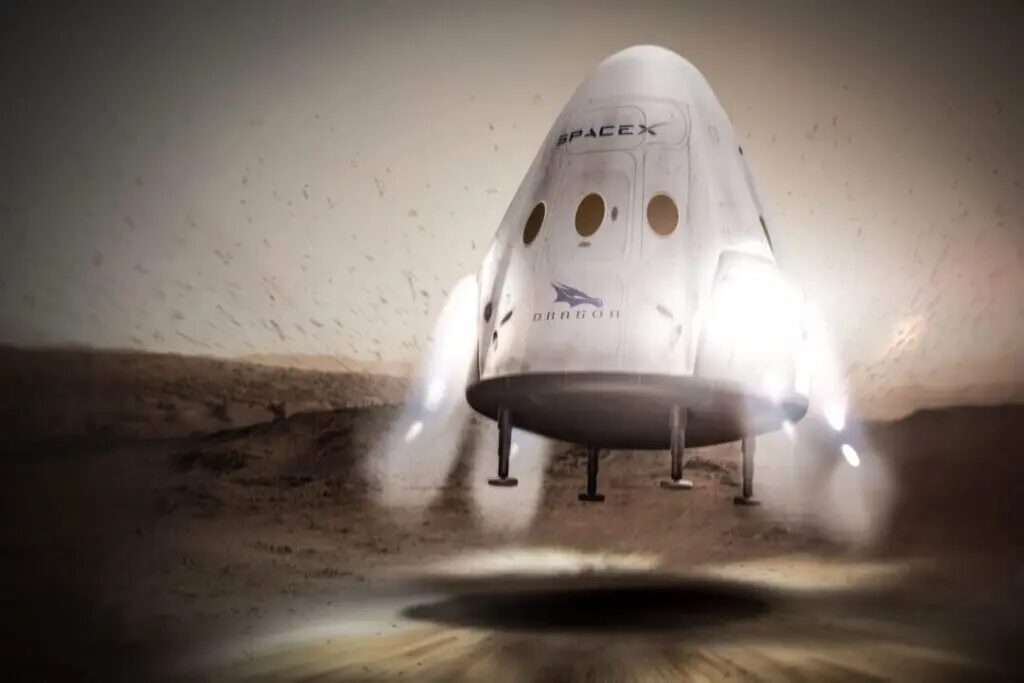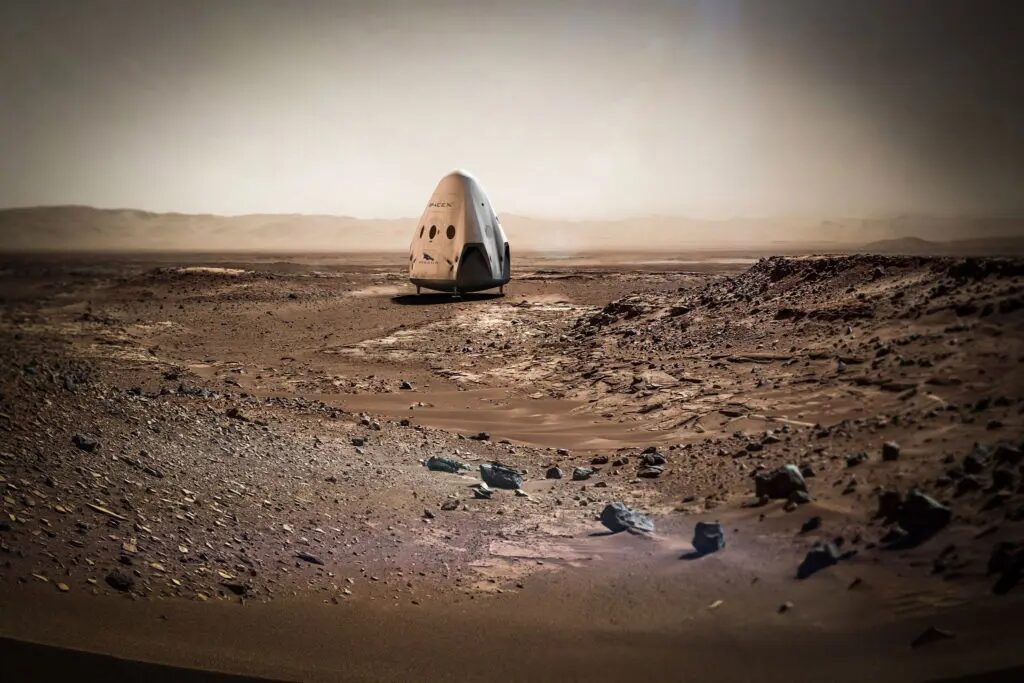We know that in order to ensure the continuation of humanity, we need to set foot on Mars. The depletion of known resources on Earth is also reinforcing the necessity of stepping onto a new planet to prevent energy wars.
The journey to Mars, which is becoming increasingly exciting with the investments of private aerospace companies, could become a reality in just eight years, according to SpaceX founder Elon Musk.
Although Musk’s presentation at the 67th International Astronomical Congress outlined the general plan for the journey to Mars, there are many steps that need to be addressed. Otherwise, death could be inevitable. As Musk said, “Volunteers must be willing to risk death.”

(SpaceX)
Your Rocket Could Explode Before Leaving Earth
The Interplanetary Transport System plans to send humans to Mars with the BFS (Big Fu**king Spaceship) rocket, which has a capacity of 200 passengers.
The rocket, with its 121-meter length, will be the largest spacecraft in the history of space exploration. The BFS, which needs to have terrifyingly powerful engines with 550,000 tons of thrust, must possess perfect engineering to avoid accidents before even exiting the atmosphere.
Many accidents have occurred, even in recent orbital missions. Orbital ATK’s Antares rocket exploded, Virgin Galactic’s WhiteKnightTwo spacecraft crashed, Roscosmos’s Proton space capsule lost control and broke into pieces, and Japan’s satellite Hitomi was lost.
SpaceX also lost a Falcon 9 in June 2015, followed by another one in September 2016 in a similar fashion.
Looking at the statistics, in NASA’s Space Shuttle Program, which carried 833 crew members between 1981 and 2011, 14 people died (Challenger and Columbia accidents). The death rate of 1.6% is less than that of climbing Everest today. In the Apollo program, the death rate was 9%.
The BFR (Big F**king Rocket) that will power the BFS will use next-generation Raptor engines. It will take years for the reusable rocket, which will detach from the spacecraft in orbit and land again, to be as flawless as the massive loads it will carry.

(SpaceX)
Radiation Could Fry You Before Reaching Mars
One of the most important details not included in Musk’s presentation is how the BFS will be protected from cosmic radiation. In fact, this is the item that has delayed NASA’s Mars travel plans the most.
As a reusable spacecraft, the BFS will shuttle between Earth and Mars. This means it needs to have an enormous shield to protect against energy-laden particles emitted from the sun. However, we do not yet know how this will be achieved, and the question of whether a radiation-affected spacecraft can be reused must also be answered.
According to data obtained during NASA’s Curiosity journey, a one-way trip that will last nine months without protection would expose astronauts to 0.3 sieverts of radiation. This is equivalent to undergoing 24 CAT scans. In other words, it is 15 times the annual radiation limit for nuclear power plant workers. Although the death threshold is 8 sieverts, radiation can cause many problems in the body.
Chris McKay from NASA’s Ames Research Center says, “The problem can be solved with water, which blocks radiation best,” but the real problem will begin once we set foot on Mars. According to Curiosity’s data, 500 days on Mars means another 0.3 sieverts.

(SpaceX)
You Could Crash During the Landing on Mars
As we recently remembered from the Rosetta mission, which ended its space exploration mission, landing and takeoff are the most critical moments for spacecraft. The Philae probe sent from Rosetta failed to land properly on comet 67P, and the months-long data collection efforts were in vain.
Remembering how NASA’s nail-biting “7 minutes of terror” mission of Curiosity ended in joy, we understand the difficulty of these missions better.
According to Musk’s plan, the BFS will enter Mars’ atmosphere at a speed of 100,000 kilometres per hour. During the descent to the red sands, it will use the “super retro propulsion system.” In other words, the system that allows the Falcon 9 rocket to land. Naturally, this technology will be greatly developed for the BFS.
More importantly, the critical manoeuvre that allows the Falcon 9 to land vertically will be much more difficult for the BFS in Mars’ atmosphere. Landing on Mars, which has a much thinner atmosphere, will be a challenge, with every detail from the amount of fuel the BFS will use to the heat shield that must withstand at least 1700 degrees being very important. The slightest mistake means inevitable death.
Remembering the historic landing of the 1-ton Curiosity, it is also worth noting that the BFS will have a carrying capacity of 550 tons.

(SpaceX)
Mars’ Atmosphere Could Wreck the Human Body
McKay says, “It’s rarely portrayed in movies, but the atmosphere of Mars is actually one of our biggest concerns.” This means:
We know that being in a zero-gravity environment has negative effects on muscle and bone structure. Crew members working on the International Space Station (ISS) have to exercise at least 2 hours a day to prevent muscle and bone loss. While muscles can be regained, the calcium lost in bones is only produced when they return to Earth.
There is a belief that we won’t have much difficulty on Mars, which has an atmosphere one-tenth of Earth’s and a gravitational force of 0.38. Some movies even depicted that we could jump like Super Mario.
However, McKay says we won’t understand the effect of the 0.38G force on Mars until we actually send someone there.

(SpaceX)
We Can’t Be Exposed to Mars’ Atmosphere
Even if the journey to Mars is successful, a more challenging survival struggle will begin from the moment we set foot. If the cargo sent before humans does not suffer any damage and the first colonists can survive with sufficient oxygen, food, and shelter, a very critical stage will be behind us.
The danger, however, lies in the accidents that could occur during the extremely challenging colonization process. As we somewhat understood from the movie “The Martian,” even the smallest leak can lead to deadly consequences. Mars storms, which turn everything into dust and dirt, are also a serious concern. McKay says, “If the airlock door or astronaut suits get dusty, this could cause serious problems, unlike on Earth.”
Musk’s current statements are geared towards long-term survival strategies. He believes in establishing a sustainable colony with machines that will break down the abnormal amount of carbon dioxide on the Red Planet into oxygen, solar panels that will generate energy, and geothermal plants that will convert the Mars ice (underground) into water and energy.
Musk had also suggested methods like melting the poles with thermonuclear bombs or heating the atmosphere by injecting carbon dioxide. By warming the planet, ocean formation could be achieved again. However, if there’s one thing I learned from Planetbase, it’s that even walking on Mars will be difficult.

(SpaceX)
Mars Soil Could Poison the Colonists
In the movie “The Martian,” astronaut Mark Whitney fights the significant damage to his base caused by storms with winds of 90 km/h. In reality, Mars, which has a super-thin atmosphere, does not produce storms as severe as those on Earth at that speed.
While it may not be easy to affect structures, the most challenging part of Mars storms is that they can last for days or even weeks (we mentioned walking would be difficult). Countless grains of sand can puncture astronaut suits and damage food and supplies, machinery, computers, and communication systems.
On top of the problems that could arise in basic life units due to sandstorms, Mars soil is toxic. The soil covered with red sand is rich in perchlorate, a salt that harms the thyroid gland. You can hold Mars soil in your hand, but if it gets into water or food, it can be deadly. In short, using Mars soil for food production is very risky.
Another risk highlighted by McKay is the potential, yet unconfirmed, presence of bacteria. The emergence of alien bacteria harmful to human health could catch unprepared colonists off guard.
The exploration vehicle and satellites to be sent before the Mars journey need to perform exceptionally well.

(SpaceX)
Your Friends in the Colony Could Drive You Crazy
I remember first encountering this issue in the 2000 movie “Red Planet.” Although it may seem like the last thing to consider, the relationship you will build with your companions on the Mars journey is another extremely challenging issue.
According to the dates given by SpaceX and NASA, the journey will last between 80 and 270 days, so there must be plenty of things to do to keep people from losing their minds. The narrowing of personal space, the impossibilities, and the extremely challenging conditions will, over time, lead to many minor problems like insomnia, disagreements, and stress, as seen in “Interstellar” and “Europa Report.”
The good news is that NASA can find people with nerves of steel ready for Mars missions in its long-term experiments. The latest of these experiments was conducted in Hawaii. Six astronaut candidates spent 366 days in a Mars home prototype offering a total area of 111.4 square meters and an 11-meter diameter.
In the experiment in Hawaii, the six subjects did not leave the living area except for exploration walks. In their spare time, they engaged in many activities, from playing the harmonica to learning French. They noted that the biggest problem was not boredom but “over-exertion.” Over time, the team, which began to spend their time playing board games and quickly serving frozen foods, got their lives in order.
Although each of them stated that returning to normal life was an incredible experience, many people are willing to leave behind warm dinners and swimming pools. In the MARS-500 project, organized in different periods between 2007-2011 in a facility in Moscow with six-person teams, there was no conflict among the colonist candidates.
Despite recent good results, we do not know what could happen on a real Mars journey. In a living experiment called Biosphere II held in Arizona in 1994, a team of seven split into two groups after getting into a fight. The project was terminated before its completion date.
People to be sent to Mars in the next 40 to 60 years need to be very well selected. Personally, I believe many of them should be logical thinkers and ego-free individuals. Perhaps a civilization opposite to that on Earth could be born through good filtering.

(SpaceX)
This article is from 2016. To read the original Turkish version, click here.
Main image: ElonMusk/X


